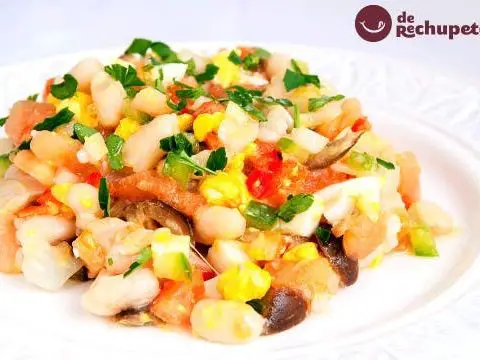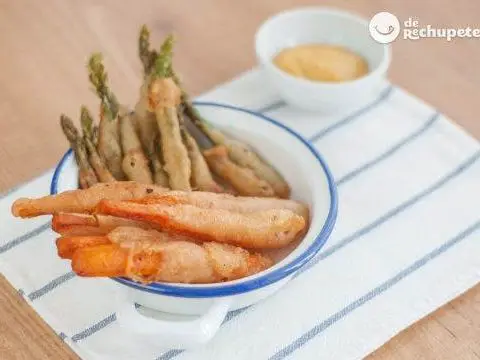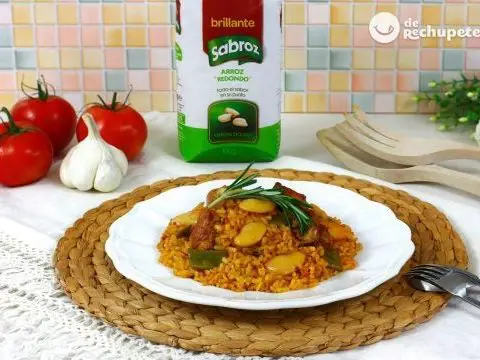
Info.
- Half
- 150 minutes
- For 6 people
- € 1.9 / person
- 182kcal per 100g.
How to prepare a recipe for cochinita pibil .
Mexican gastronomy has been triumphing in Spain for several years, where we can enjoy its typical dishes beyond the more widespread “tex-mex” trend .
One of the most common meat recipes in restaurants is the ” Cochinita Pibil “, originally from the Yucatan peninsula, cradle of the Mayan civilization. It is a dish that is the result of “ crossbreeding ” between the traditional cuisine of the pre-Columbian inhabitants and that imported by the Spanish conquistadors.
Pork came to these lands on ships arriving from Spain and the inhabitants of the Yucatan were the first to know of its existence. It is the main ingredient of this dish, which is combined with Mexican seasonings and cooking techniques.
The yucateca preparation consists of preparing brawn a condiment called ” annatto “, wrapped in banana leaves and cooked in a hole in the ground on hot stones. This is where part of its name comes from, since ” pibil ” originates from the Mayan word pib, which means buried.
On one of the most important days of their calendar, the ” Hanal Pixan ” or ” day of the dead “, the Mayans prepared a large tamale (package with banana leaves) filled with meat of wild animals and then cooked it inside a underground oven like the one we talked about. Overcoming the distances, we will try to transmit you the recipe for ” cochinita pibil ” so that you can prepare it and enjoy it at home, without the need for you to have banana leaves or an oven buried in the garden floor.
In addition to pork, another essential ingredient for this dish is Achiote (Bixa Orellana). A seasoning that comes from the seeds of a tree. Native to Central America , this tree produces a capsule-shaped fruit of about 5 centimeters. When ripe, it produces between 30-40 reddish seeds, from which the annatto pulp is obtained .
It is highly appreciated in the kitchen and in the industry for its coloring power. Its use that is combined with its function of seasoning or spice. I hope you cheer up with one of the most important dishes of Mexican gastronomy. You will tell me.
Preparation of the cochinita pibil
For this recipe we will not spend much, the kg of pork loin costs about € 5, the Achiote paste € 2.50 and the dehydrated chilies € 2.20. It is also perfect for a themed dinner with friends, preparing it at home is not very complicated. I explain the recipe.
- We begin with the preparation of the macerate with annatto, since we must marinate the meat and leave it to marinate for a while.
- In a large cup or bowl we are adding the orange juice, the lime juice, a pinch of cumin, chopped dried oregano, 50 ml of extra virgin olive oil and a couple of tablespoons of vinegar. Finally about 80 gr of annatto pulp.
- We stir with a spoon / fork at first. Then we transfer it to a blender glass and crush until we get a sauce with a homogeneous texture and a little thick.
- Season the meat to taste and place it on aluminum foil in a baking tray.
- Add the julienned white onion and pour the achiote sauce on top. We try to keep the meat completely impregnated. Ideally, it should be macerated for at least 12 hours stored in the fridge. If you are in a hurry at least one hour is necessary.
Baking of the cochinita pibil
- We already preheat the oven to 200º C for about 10 minutes, in the “total heat” function (in our case Fan + up + down).
- We want to simulate a kind of “buried” oven, so we are going to roast the pork loin in “papillote”.
- We make a kind of package (papillote) with the aluminum foil, leaving some clearance for the meat to cook inside.
- We put in the central tray and bake 60 minutes at 200º C. With this time and this temperature you will have a tender point, so that the meat is not too dry.
- While the loin is baking, we advance with the rest of the recipe.
- Of the 2 purple onions, we leave one half uncut to decorate on the plate.
- We cut the rest into “brunoise” (small dice) and pour it into a large bowl. We hydrate the dried chiles, remove the seeds and chop them well. Be careful with the amount you add depending on your ability to withstand the spicy. I’ve been restrained by adding just one, and still it stings a lot.
Final presentation of the cochinita pibil
- Add the lemon juice, a pinch of salt, mix all the ingredients and reserve until plating.
- When the oven time is over, remove the “papillote” and open it with care not to burn.
- You will see the meat has acquired the color and flavor of the annatto marinade. With the help of a sharp knife, first cut into thick slices.
- Then we crumble them with our hands into small pieces. It is so that we are left in small strips similar to when we prepare the Cuban “old clothes”.
- In a wide tray, place the meat or “cochinita” and pour over the achiote sauce that we had left over.
- We mix so that the loin takes all the flavor. Add the onion marinade on top.
- We serve at the table, also placing as decoration the half purple onion, cut into julienne strips.
In Mexico, the Cochinita Pibil is usually accompanied with white rice and especially with hot corn tortillas , which we fill by making tacos or fajitas to our liking.
Your advice and recommendations for a suckling pig pibil
- Norma Isabel Aranda who lives in the Gulf of Mexico (San Francisco de Campeche) has told me how she prepares this dish: “ I am going to give you my recipe. Marinate the meat with annatto, pepper, oregano, garlic and cumin. Add the juice of the sour orange and salt. Leave it in the refrigerator for a day so that it is better marinated. Wrap the meat in a banana leaf and bake it or cook with little water. Chopped red onion is prepared with sour orange juice and salt. Some habanero peppers are roasted and liquefied with two garlic cloves. To eat.”
- Flora Fernández tells me: “ I have recently prepared your recipe using banana leaves that are easily available in Costa Rica. It is an option not to use aluminum foil to conserve the humidity of the meat. You can also use orange leaves, although they are smaller. Placing them in the bottom of a slow cooker, on top of the meat and the broths in which it was marinated and then covered with more orange leaves. The aroma of these leaves leaves a very pleasant flavor in the meat. Using the slow cooker solves problems in countries where banana leaves are not available. ”
- Américo González clarifies the issue of achiote and spice. “ We can find it in Latin gastronomy shops, where they sell products from Central and South America. In various formats: powder, paste or pulp, seeds and even annatto oil . Another peculiar ingredient is the Habanero Chiles (Capsicum chinense) , one of the spiciest known. Its use in Yucatecan cuisine is very typical. Mexico is the largest producer as they have their protected and certified designation of origin. ”






